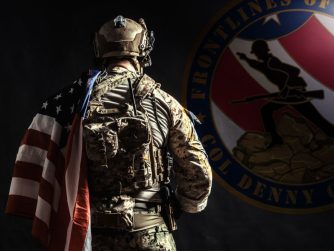On 4 Nov 1979, Iranian “students” attacked and captured the US Embassy in Teheran, Iran. Note that an attack on an embassy is an act of war. The hostages were tortured, isolated, and treated horribly. They were released on the day the Ronald Reagan became President of the US, having been held prisoner for 444 days.
President Jimmy Carter tried to negotiate with Iran but was totally unsuccessful. Finally, he approved a secret rescue mission, Operation Eagle Claw. For whatever reason, the Pentagon did not use the one headquarters that had experience making elements of the different services work together, and did so routinely in exercises—this was a serious problem in our military at the time. US Readiness Command, located at MacDill AFB in Tampa was that headquarters; I was their Mideast war planner at the time. No, for whatever reason, the folks in the Pentagon winged it. They quickly put together good, competent people, but the team had all the expected weaknesses, especially in getting all the operators on the same frequency at the same time.
Late in the afternoon of April 24, 1980, eight RH-53D helicopters flew from the carrier USS Nimitz to a remote road serving as an airstrip in the Great Salt Desert of Eastern Iran, near Tabas. Early the next morning six of the eight RH-53D helicopters met up with several waiting C-130 transport and refueling airplanes at the landing site and refueling area, designated “Desert One” by the mission.
Of the two helicopters that did not make it to Desert One, one suffered avionics failures en route and returned to the Nimitz, and the other had an indication that one of its main rotor blades was fractured, and was abandoned in the desert en route to Desert One. Its crew was seen and retrieved by another helicopter that continued to Desert One. The helicopters maintained strict radio silence under orders for the entire flight, an issue which impacted their ability to maintain a cohesive flying unit while en route, as they all arrived separately and behind schedule. The strict radio silence also prevented them from requesting permission to fly above the sandstorm as the C-130s had done, and they flew the entire route at hazardous low levels, even while inside the sandstorm and with limited field of vision and erratic instrumentation.
The mission plan called for a minimum of six helicopters but of the six that made it to Desert One, one had a failed primary hydraulics system and had flown on the secondary hydraulics system for the previous four hours. The failing helicopter’s crew wanted to continue, but due to the increased risk of not having a backup hydraulic system during flight, the helicopter squadron’s commander decided to ground the helicopter. The commander of the operation, Col. Beckwith, then recommended the mission be aborted, and it was approved by President Carter. As the helicopters repositioned themselves for refueling, one helicopter ran into a C-130 tanker aircraft and crashed, killing 8 US servicemen and injuring several more.
The aforementioned failed rescue attempt led to the creation of the 160th S.O.A.R., an Army helicopter aviation special operations group and the US Special Operations Command.



